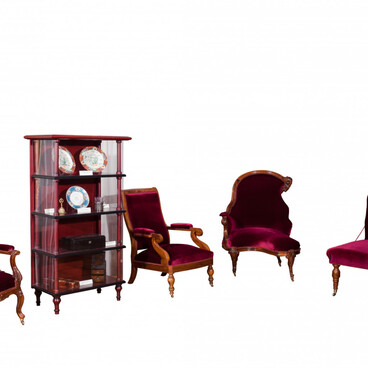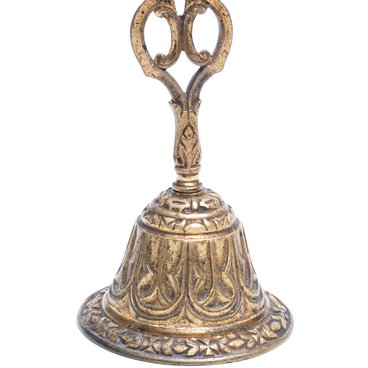The coffee table, that used to belong to Ivan Goncharov, entered the museum’s collection in 1974. It was donated by Natalya Kazas, who was a relative of one of the last owners of this item. In her letter, she wrote,
Coffee Table
Время создания
the first half of the 19th century
Размер
72x58x58 cm
Техника
walnut, woodwork, assembly, decorations
Коллекция
4
Открыть в приложении#1
Coffee Table
#4
#5
I.A. Goncharov gave the coffee table to his friend Yekaterina Nikolayevna Shostak, who was the inspectress (that is, headmistress — ed.) of the Nikolayevsky Institute for Orphaned Children from 1863 to 1897. Goncharov was on friendly terms with her and visited from time to time. It went like this: he came to church for the end of the holiday service and then came up to the inspectress’s apartment. She liked drinking coffee with the people she favored after going to church on holidays, gathering everybody in her room. Once the hostess expressed the wish of having a small table ‘for comfort’. And she also added, ‘something like you use for refreshments’, addressing Goncharov. Apparently, the hostess knew what the apartment of her bachelor friend looked like. The next holiday, this table appeared in the inspectress’s office.
#2
After Yekaterina Shostak’s death, the coffee table was passed to one of her favorite students — Zinaida Aleyeva. She was acquainted with Goncharov as well, and remembered him as already mature, but athletic and always smartly dressed. The writer sent sweets and books to the institute wards, gave them flowers and attended private theatricals and concerts they organized.
The next owner of Goncharov’s coffee table was ophthalmologist Ilya Kazas. Zinaida Aleyeva gave it to him as a housewarming present.
The history of coffee tables dates back to 19th century Victorian England. Before them, people used the so-called console tea tables and set them behind the back of a sofa. Later, the furniture maker Edward William Godwin transformed the traditional tea table into a table on low legs, which was usually placed next to a sofa. This arrangement can be found in modern houses as well.
At first, coffee tables were solely carved out of fine wood, so they were expensive and only well-off people could afford them. Others, who still wanted to have a fashionable piece of furniture and did not have the means for it, simply shortened the legs of ordinary dining tables.
Gradually, marble tabletops came into fashion. The legs were now made not only of wood, but also metal. Some models were decorated with paintings or inlaid work.
The next owner of Goncharov’s coffee table was ophthalmologist Ilya Kazas. Zinaida Aleyeva gave it to him as a housewarming present.
The history of coffee tables dates back to 19th century Victorian England. Before them, people used the so-called console tea tables and set them behind the back of a sofa. Later, the furniture maker Edward William Godwin transformed the traditional tea table into a table on low legs, which was usually placed next to a sofa. This arrangement can be found in modern houses as well.
At first, coffee tables were solely carved out of fine wood, so they were expensive and only well-off people could afford them. Others, who still wanted to have a fashionable piece of furniture and did not have the means for it, simply shortened the legs of ordinary dining tables.
Gradually, marble tabletops came into fashion. The legs were now made not only of wood, but also metal. Some models were decorated with paintings or inlaid work.
#3
Ministry of Culture of the Russian Federation
читать дальшескрыть
00:00
00:00
1x
Coffee Table
Время создания
the first half of the 19th century
Размер
72x58x58 cm
Техника
walnut, woodwork, assembly, decorations
Коллекция
4
Открыть в приложении
Поделиться



